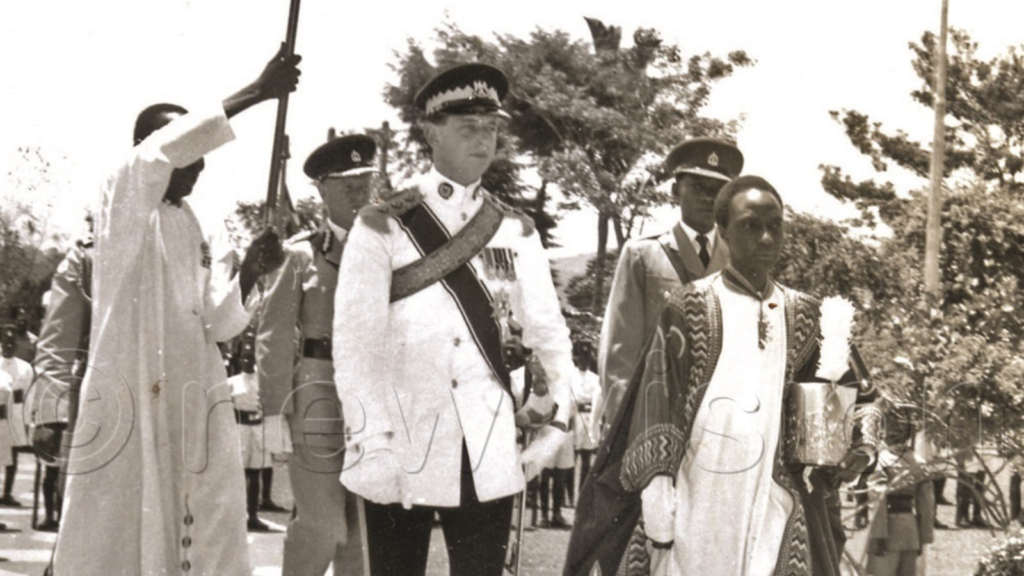In the early years of Uganda's independence from British colonial rule (1962-1963), the political landscape was marked by significant constitutional developments and power struggles.
Political Landscape
- Independence and Political Parties (1962): Uganda gained independence on October 9, 1962. Milton Obote became the Prime Minister, leading the Uganda Peoples Congress (UPC), while the Democratic Party (DP) emerged as a significant opposition force.
- Federal Structure and Ethnic Tensions: The 1962 Constitution established a parliamentary system and included a federal structure, which gave considerable autonomy to regional kingdoms, notably Buganda. However, this arrangement led to tensions between the central government and regional authorities.
- Relations Between Obote and Muteesa: Prime Minister Obote and the Kabaka of Buganda, Sir Edward Muteesa II, had a complicated relationship. Muteesa was a symbol of Bugandan nationalism and a key political figure. His support was crucial for the legitimacy of the new government.
Constitutional Developments
- 1962 Constitution: The constitution provided for a bicameral legislature and established a parliamentary democracy. It aimed to balance power between the central government and the kingdoms while outlining the roles of the Prime Minister and the Kabaka.
- Power Struggles and Political Alliances: Tensions arose as Obote’s government sought to centralize power, which undermined the autonomy of Buganda and other kingdoms. The UPC and DP struggled for influence, leading to heated political rivalries.
Muteesa's Presidency (1963)
- Transition to Presidency: Following the constitutional provisions, Sir Edward Muteesa II was declared the first President of Uganda in 1963. This move was partly to placate the Buganda people and reinforce their loyalty to the new government.
- Reasons for Muteesa’s Appointment:
Symbol of Unity: Muteesa’s appointment aimed to symbolize unity between the central government and Buganda. His status as a traditional leader helped legitimize the new Ugandan state.
Political Pressure: With rising tensions and the need to maintain stability, it was beneficial for Obote’s administration to have Muteesa in a ceremonial position to quell discontent in Buganda.
Crisis Management: The appointment could also be seen as a strategic move to manage the increasing political unrest and draft a semblance of peace among competing factions. - Limited Power: Although Muteesa held the title of President, his power was largely ceremonial, and real political authority rested with Prime Minister Obote. The political environment remained fraught, with underlying tensions simmering as Muteesa’s role became increasingly marginalized.
Conclusion
Between 1962 and 1963, Uganda’s political landscape was defined by struggles for power, the complexities of ethnic relations, and attempts to govern a diverse nation following independence. While Sir Edward Muteesa II became the first President of Uganda, his role reflected a delicate balance of power amid escalating tensions between central authority and regional interests. This period laid the groundwork for subsequent political crises and conflicts in Uganda’s history.

